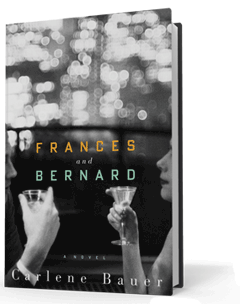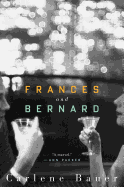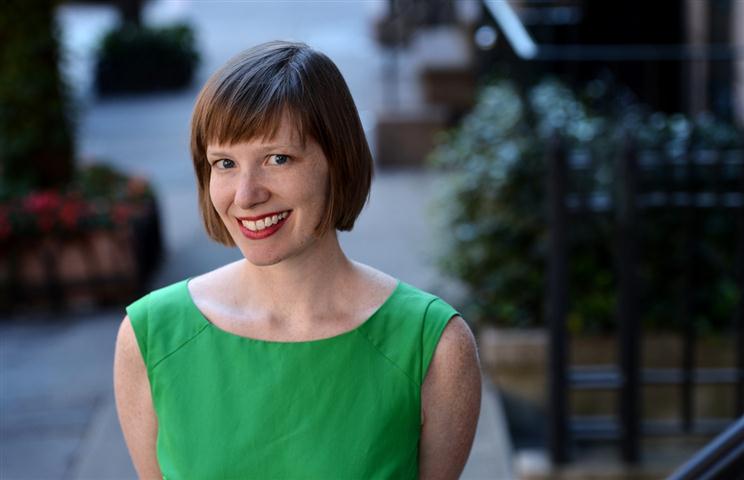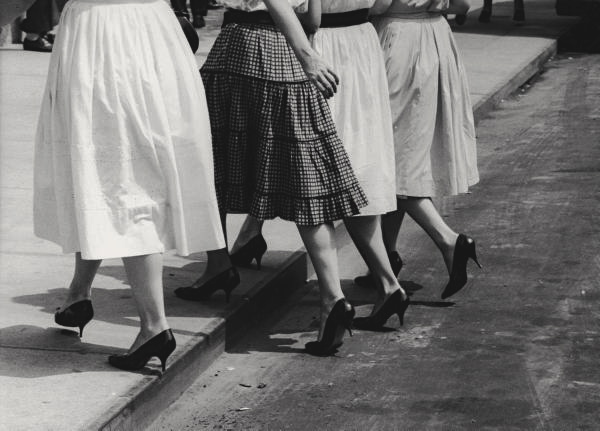Frances and Bernard
by Carlene Bauer
A writer's colony in 1957 sets the scene for the fateful meeting of two young writers. Frances Reardon is a devoutly religious Catholic and hard at work on her first novel. Harvard graduate Bernard Eliot is also Catholic, but has a pronounced Dionysian streak and writes poetry reminiscent of the sensuous John Donne. The two strike up a correspondence that is to reverberate down the years, across continents, and will ultimately shape the course of their lives.
When they first meet at the colony, Bernard says to Frances that men "have a tendency to wreck beautiful things." His words may prove prophetic in the years that follow, as their friendship progresses into a complex and tormented sort of love. While a romance between Frances and Bernard is fraught with traps, there can be no doubt how they got into it: sparks fly between them in the form of remarkably erudite, vividly written letters that only artists of equal and impressive calibre could have produced.
At the beginning, the balance of power between the protagonists is uneven at best. Bernard is wealthy, Harvard-educated and well-connected in the New York City literary scene. In contrast, Frances faces a gauntlet of challenges--a father and sister who need her care, the necessity of working in a secretarial position, and the sexism endemic to the period. She begins life in New York City in a home for single women where they are institutionalized and infantilized, denied true independence. Perhaps more significantly, Frances will repeatedly wrestle with the prospect of marrying and how it might affect her ability to keep writing. Frances's struggle to reconcile the demands of love and work becomes even more pronounced when Bernard is diagnosed with debilitating mental illness, which would make caring for him the focus of any relationship, possibly to the exclusion of all else.
Appropriately for a book in which the protagonists are writers, books are as essential in Frances and Bernard as the punctuation. The atmosphere is rich with the scent of books old and new, with rapid-fire literary references exchanged back and forth. But the discussions are by no means limited to literature: The common thread that originally draws the two together is religion. At a time when most artists are beginning to turn away from Christianity, these Catholic writers recognize a kinship with one another. The nature of belief and God is therefore fuel for much lively conversation, which includes the citations of theologians from St. Augustine to Simone Weil. Readers of Carlene Bauer's memoir, Not That Kind of Girl, about her life growing up an Evangelical Christian, will recognize religious turmoil as familiar territory for the author.
While religion seems to be something Bernard dabbles in or flirts with, it defines Frances. How she reconciles this religious devoutness with a subsequent free-wheeling sexual relationship with Bernard is unclear--the conflict is never addressed--but generally Frances's faith lends her a rigidity that tends to shade into judgmentalism. She is, however, no easier on herself in her judgments than she is on anyone else. She is a character at once very much of her time, and very much of ours: while religiously committed in a manner unusual for contemporary artists, Frances is also determinedly ambitious and independent compared to the women surrounding her. Most are content to be wives and mothers, while her highest priority is to become a successful writer.
If not for the brilliance of his poetry, Bernard would be a pleasant rake, a character identifiable in any century. Perhaps there has been less need for men to adapt to the times in which they lived, and thus a character like Bernard could exist in any age. For this reason, while technically he is as equally in the spotlight as Frances, his character sometimes seems like a foil for hers. By bringing chaos to Frances's life, Bernard's role is to spur her development, and ultimately her profound struggles in religion, art and life. --Ilana Teitelbaum
Shelf Talker: An epistolary novel of considerable erudition and wit, chronicling a stormy relationship between two writers beginning in 1957 and exploring diverse questions of art, faith, and love.











